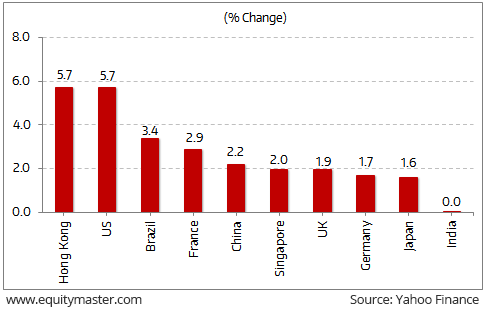Global financial markets rallied this week and brushed aside a rise in global borrowing costs while the dollar hit its lowest level since 2014.
The S&P 500 and the Dow Jones Industrial Average have rallied for six consecutive sessions since falling last week into correction territory as investors took in their stride the possibility of more interest rate hikes from the Federal Reserve. The indices have notched their largest five-day percentage increases since December 2011, up 4.3% and 5.6%, respectively.
European stocks ended the week higher, with most major indices showing strength in a variety of sectors as concerns about rising interest rates and inflation apparently eased. Among country benchmarks, the UK’s FTSE was up 1.9% and Germany’s DAX added 1.7%, while France’s CAC 40 outperformed, up 2.9%.
In Asia, Japan’s Nikkei rose 1.6%, with investors relieved to see the government appoint Bank of Japan Governor Haruhiko Kuroda for another term, suggesting the central bank will be in no rush to dial back its massive stimulus program. Chinese stocks advanced in a holiday-shortened week, paring some of their big declines from the previous week’s global sell-off, as the country prepared for the Lunar New Year holiday. China’s Shanghai Composite was up 2.2% over the week.
Back home, the BSE Sensex closed nearly 300 points lower on Friday as bank stocks dragged after more banks disclosed their exposure in the PNB fraud case. The PSU Bank index was the biggest underperformer, ending 9% lower during the week. The BSE-Sensex ended the week on a flat note. Meanwhile, the BSE MidCap was down 0.2% and Smallcap fell 0.8% this week.
Key World Markets During the Week

On the sectoral indices front, stocks from Consumer Durables and Banking witnessed selling pressure.
BSE Indices During the Week

Now let us discuss some key economic and industry developments during the week gone by.
In a major step, The Reserve Bank of India (RBI) has come out with new rules for dealing with bad loans. Starting February 23, banks must immediately identify the defaults and make disclosures every Friday to the RBI credit registry. The RBI, however, clarified these timelines do not apply to accounts where insolvency action has already been initiated at the insistence of the central bank.
In addition, the central bank withdrew a host of norms such as strategic debt restructuring (SDR) and scheme for sustainable structuring of stressed assets (S4A) among others and made the process time-bound. The Joint Lenders’ Forum (JLF) as an institutional mechanism for resolution of stressed accounts also stands discontinued. The new rules stipulate that starting 1 March, lenders must implement a resolution plan within 180 days for accounts of at least Rs 20 billion.
In the other news, robust growth in shipments of chemicals, engineering goods and petroleum products pushed India’s exports by 9% to US$24.4 billion in January. However, the gain was nullified by an even stronger growth in imports at 26%, which widened the trade deficit to a three-year high of US$16.3 billion. Imports in January stood at US$40.68 billion.











Leave A Comment